Manduca lefeburii, Paraguay, PYBIO
This site has been created by Bill Oehlke.
Comments, suggestions and/or additional information are welcomed by Bill.
TAXONOMY:
Family: Sphingidae, Latreille, 1802 |
|
|
Updated as per http://www.pybio.org/SPHINGINAE.htm (Paraguay), November 2007 Updated as per "A Hawk Moths fauna of southern Maranhão state, Brazil, ... "; NEVA: Jahrgang 34 Heft 3 November 2013; via Jean Haxaire; April 5, 2014 Updated as per personal communication with Sergio D. Ríos Díaz in CATÁLOGO DE LOS SPHINGIDAE (INSECTA: LEPIDOPTERA) DEPOSITADOS EN EL MUSEO NACIONAL DE HISTORIA NATURAL DEL PARAGUAY; sent to me in July 2014 by Sergio D. Ríos Díaz. Updated as per personal communication with Joanna Rodriguez Ramirez (Tucuman; Argentina), January 22, 2015 Updated as per personal communication with Terry Stoddard (El Progresso, Guatemala, June, 115mm); August 15, 2015 Updated as per personal communication with Ezequiel Bustos (Shilap revta. lepid. 43 (172) diciembre, 2015, 615-631 eISSN 2340-4078 ISSN 0300-5267), January 4, 2016 Updated as per personal communication with Albert Thurman (Bocas el Toro, Panama, September 27, 2019); September 28, 2019 |
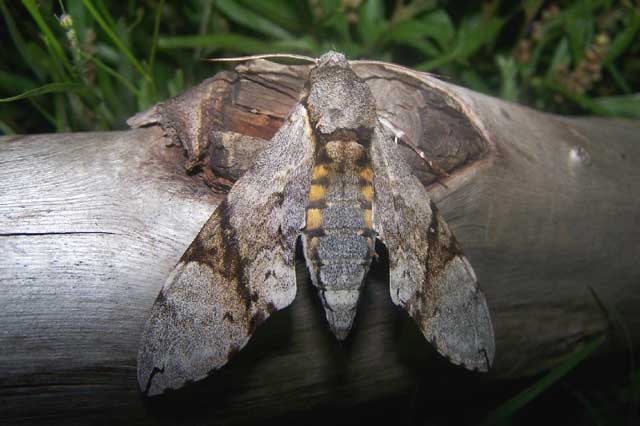
Manduca lefeburii, Paraguay, PYBIO
This site has been created by Bill Oehlke.
Comments, suggestions and/or additional information are welcomed by Bill.
TAXONOMY:
Family: Sphingidae, Latreille, 1802 |
In Bolivia it has been taken in Santa Cruz: Warnes; and Ipati (1000m), Department of Santa Cruz.
In Central America it is reported in
Belize: Cayo;
Guatemala: El Progresso (TS);
Nicaragua: Rio San Juan;
Costa Rica: Guanacaste, Puntarenas,
Alajuela, Heredia, San Jose.
By interpolation it should also be in Colombia and Peru. Albert Thurman confirms it in Panama.
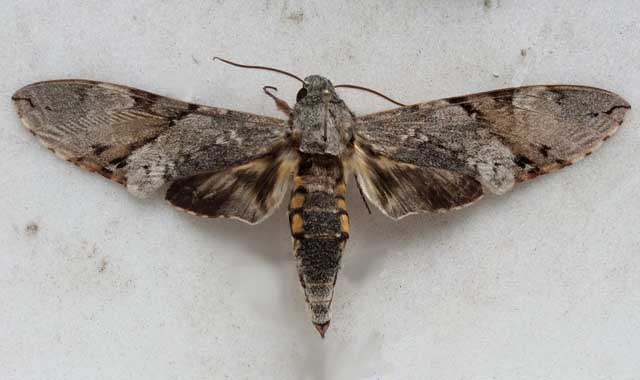
Manduca lefeburii, Palo Seco Forest Reserve, Bocas del Toro, Panama,
September 26, 2019, courtesy of Albert Thurman.
The moth is named for M. Lefébure de Cerisy.
Similar to Manduca andicola, Manduca incisa and Manduca jasminearum in having a relatively uniform forewing upperside with a conspicuous, if rather diffuse, dark band running from about midway along the costa to the outer margin near vein CuA1 and incorporating the discal spot.Distinguished from Manduca incisa by the lack of a narrow black mesial line on the abdomen upperside; by the forewing upperside not being paler proximal to the transverse band than distal to it; by the distal costal mark being less conspicuous; and by the shorter apical line. CATE
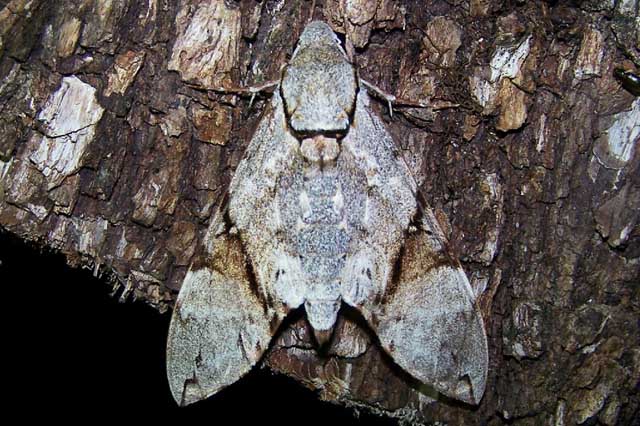
Manduca lefeburii, Paraguay, PYBIO
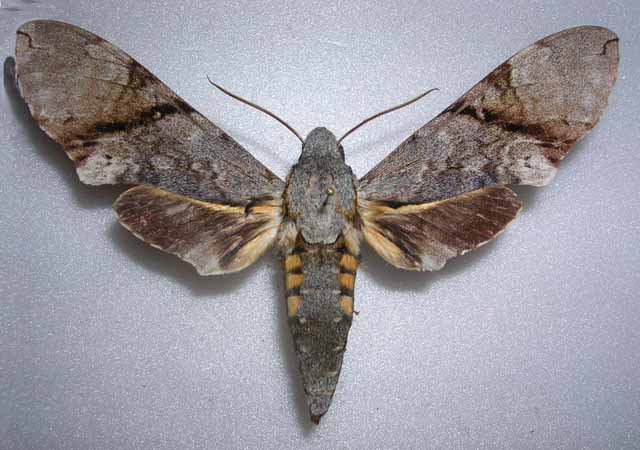
Manduca lefeburii, Brasil, Poté, Minas Gerais, November 11, 2004, courtesy of Frederik Goussey.
In Bolivia they have been observed in October-December.
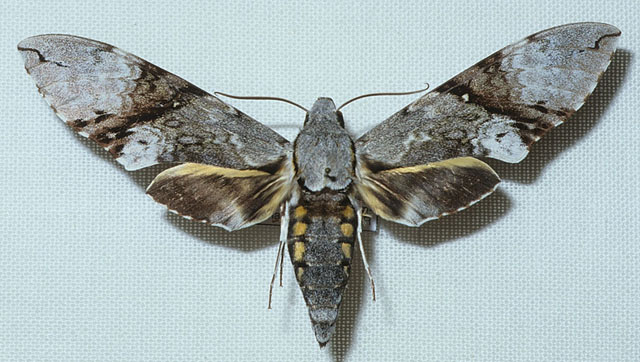
Manduca lefeburii male, courtesy of Hubert Mayer, id by Jean Haxaire
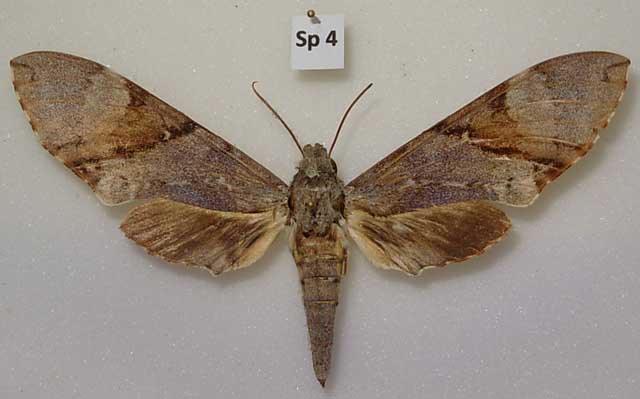
Manduca lefeburii, Hacienda La Vega, 10km N El Rancho Jct, El Progresso, Guatemala,
June 11, 2015, 300m, 115mm, courtesy of Terry Stoddard.
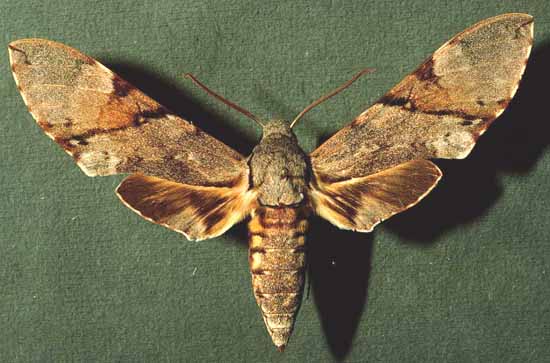
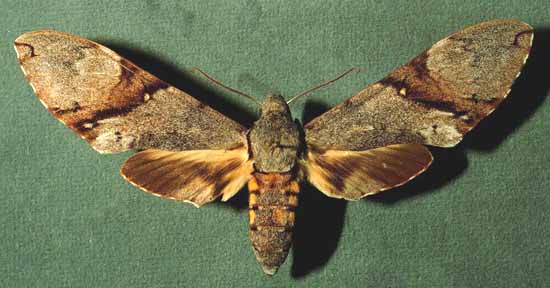


Larvae are subject to parasitization by Microplitis espinachi of the Braconidae family.
Use your browser "Back" button to return to the previous page.
Return to Sphingidae Index
Return to Sphingini Tribe
Use your browser "Back" button to return to the previous page.
This page is brought to you by Bill Oehlke and the WLSS. Pages are on space rented from Bizland. If you would like to become a "Patron of the Sphingidae Site", contact Bill.
Please send sightings/images to Bill. I will do my best to respond to requests for identification help.
Enjoy one of nature's wonderments: Live Saturniidae (Giant Silkmoth) cocoons.
 Show appreciation for this site by clicking on flashing butterfly to the left. The link will take you to a page with links to many insect sites. |